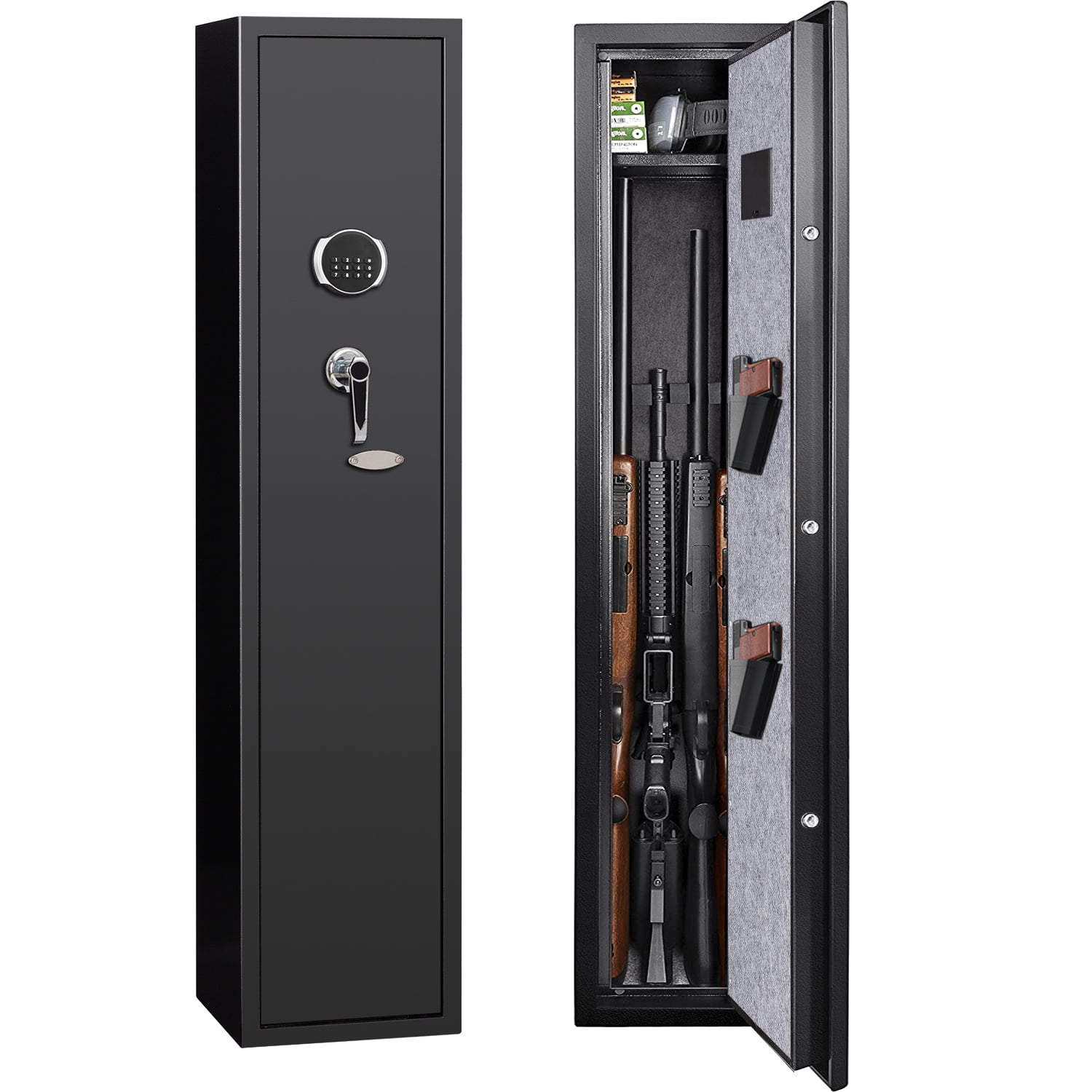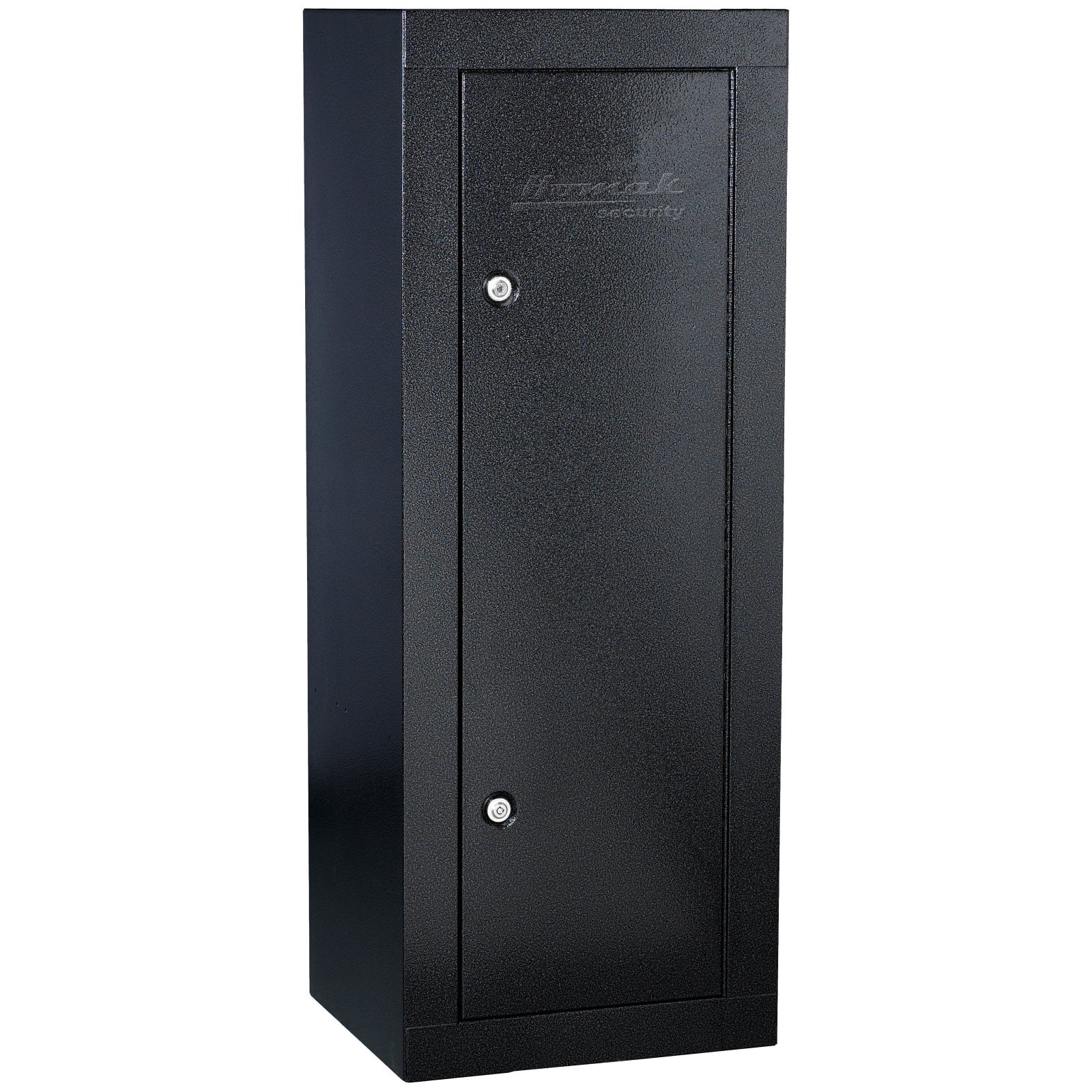Types of Gun Cabinet Door Locks

Choosing the right lock for your gun cabinet is crucial for ensuring the safety and security of your firearms. The market offers a variety of options, each with its own strengths and weaknesses. Understanding these differences will help you make an informed decision based on your specific needs and budget.
Gun Cabinet Lock Mechanisms
Several mechanisms are used in gun cabinet locks, each offering a different level of security and ease of use. These mechanisms determine how the lock operates and how resistant it is to tampering or forced entry. Common mechanisms include key locks, combination locks, electronic locks, and biometric locks. Each mechanism presents a trade-off between security, convenience, and cost.
Types of Gun Cabinet Locks and Their Features
The following table compares four common types of gun cabinet locks:
| Lock Type | Price Range | Ease of Installation | Security Level |
|---|---|---|---|
| Key Lock | $10 – $50 | Easy | Moderate |
| Combination Lock | $20 – $100 | Moderate | Moderate to High |
| Electronic Lock | $50 – $200+ | Moderate to Difficult | High |
| Biometric Lock | $100+ | Difficult | High |
Key Locks: Pros and Cons, Gun cabinet door locks
Key locks are the most common and often the least expensive type of gun cabinet lock. They are relatively simple to install and use. However, their security is limited; they are vulnerable to picking or bumping if not high quality. Lost keys can also be a major inconvenience. Many inexpensive key locks are easily defeated by a determined thief.
Combination Locks: Pros and Cons
Combination locks offer a higher level of security than key locks because they don’t rely on a physical key that can be lost or duplicated. They are more resistant to picking and bumping, but complex combinations can be difficult to remember. High-quality combination locks offer robust security, but cheaper models might be susceptible to manipulation.
Electronic Locks: Pros and Cons
Electronic locks provide advanced security features, such as programmable access codes, keypads, and even remote control capabilities. They are more expensive and complex to install than key or combination locks. However, they offer superior security and convenience. Battery failure is a potential drawback, rendering the lock inoperable until replaced. Some models also offer features like audit trails, recording access attempts.
Biometric Locks: Pros and Cons
Biometric locks use fingerprint scanning or other biometric technology to verify user identity, offering the highest level of security among the types listed. They are the most expensive and complex to install. They eliminate the need for keys or codes, and are very difficult to compromise. However, they can be affected by environmental factors and may require periodic recalibration.
Examples of Gun Cabinet Lock Brands
Several reputable brands manufacture gun cabinet locks. Examples include but are not limited to: Master Lock (known for a wide range of key and combination locks), Sargent & Greenleaf (specializing in high-security locks, including electronic options), and GunVault (producing a variety of electronic and biometric locks). Each brand offers varying levels of security and features within their product lines. Researching specific models from each brand will allow for informed decision-making.
Installation and Maintenance of Gun Cabinet Door Locks

Proper installation and regular maintenance are crucial for ensuring the security and longevity of your gun cabinet door locks. Neglecting either can compromise the safety of your firearms and potentially lead to costly repairs or replacements. This section details the process for installing various lock types and provides a maintenance schedule to keep your locks functioning optimally.
Installing Different Types of Gun Cabinet Door Locks
The installation process varies depending on the type of lock. However, some general steps apply across the board. Always consult the manufacturer’s instructions for your specific lock model as they may contain crucial details not covered here. Improper installation can void warranties and compromise security.
- Step 1: Preparation. Before beginning, ensure you have all necessary tools (screwdriver, drill, possibly a template depending on the lock), and the lock itself. Carefully examine the lock’s components and familiarize yourself with the instructions. Clear the area around the cabinet door to provide ample workspace.
- Step 2: Marking and Drilling (if necessary). Some locks require pre-drilling holes. Use a drill bit of the appropriate size, and carefully mark the location of the holes on the cabinet door and frame, ensuring accurate alignment. A template provided by the manufacturer is highly recommended for precision. Illustrative example: Imagine the template as a stencil, precisely outlining where each hole should be drilled. This prevents misalignment and ensures a smooth installation.
- Step 3: Installing the Lock Mechanism. This involves inserting the lock’s internal components into the prepared holes or slots, often securing them with screws. Precisely align the components to avoid misalignment. Illustrative example: Imagine fitting together interlocking pieces of a puzzle – each piece must be in its correct place to function properly. A slight misalignment can hinder the lock’s operation or cause damage.
- Step 4: Attaching the External Components. Once the internal mechanism is secured, attach the external components (handle, keyhole, etc.). Ensure they are firmly attached and function smoothly. Illustrative example: Picture the final assembly as a clock; each component – hands, gears, casing – needs to be perfectly assembled to function correctly. A loose component can lead to malfunction.
- Step 5: Testing and Adjustment. After installation, thoroughly test the lock to ensure it operates correctly and securely. Make any necessary adjustments to ensure smooth operation and proper alignment. Illustrative example: Consider a car door lock. If it’s not properly aligned, the key might not turn smoothly or the latch might not engage properly.
Troubleshooting Common Installation Issues
Several issues can arise during installation. Addressing them promptly is crucial for a secure and functional lock.
- Problem: Misaligned holes. Solution: Carefully re-examine the manufacturer’s instructions and use a template if available. If necessary, use wood filler to patch and re-drill the holes.
- Problem: Stripped screws. Solution: Use a larger diameter screw or try a screw with a different thread type. If the hole is stripped, use a wood dowel to reinforce the area before installing a new screw.
- Problem: Lock mechanism doesn’t function correctly. Solution: Double-check all components for proper alignment and installation. Consult the manufacturer’s instructions for troubleshooting specific to the lock model.
Gun Cabinet Door Lock Maintenance Schedule
Regular maintenance extends the lifespan of your gun cabinet locks and ensures their continued effectiveness.
- Monthly Inspection: Visually inspect the lock for any signs of damage, wear, or loose components. Check the operation of the locking mechanism. Lubricate moving parts with a light machine oil if needed. Illustrative Example: Think of it like checking your car’s tires – regular inspection prevents small problems from becoming big ones.
- Annual Inspection: Perform a more thorough inspection, including checking for any signs of corrosion or rust. If any issues are detected, address them promptly. Illustrative Example: Similar to an annual car checkup, a more detailed inspection identifies any underlying problems that might not be immediately obvious.
- Lubrication: Use a light machine oil or a specialized lock lubricant to keep moving parts lubricated and prevent wear. Avoid using heavy grease, which can attract dust and debris. Illustrative Example: Lubrication is like keeping the joints in your car properly oiled – it ensures smooth operation and prevents premature wear.
Security Considerations and Best Practices

Protecting your firearms is paramount, and relying solely on a flimsy lock is a gamble you shouldn’t take. The security of your gun cabinet isn’t just about the lock itself; it’s about a comprehensive approach that considers the lock’s quality, the cabinet’s construction, and its placement within your home. A compromised gun cabinet can have devastating consequences, so investing in robust security is an investment in peace of mind.
Choosing a high-security gun cabinet door lock is crucial. Inadequate security measures leave your firearms vulnerable to theft or unauthorized access, potentially leading to accidents, criminal activity, or even misuse. Think about it: a simple padlock or a low-quality combination lock offers minimal resistance to a determined thief. We’re talking about serious consequences, and the cost of a high-quality lock pales in comparison to the potential losses.
High-Security Lock Selection
Selecting a high-security lock goes beyond simply choosing the most expensive option. Consider features like pick-resistance, drill-resistance, and tamper-resistance. Look for locks with hardened steel components and complex locking mechanisms. A good quality biometric lock, for instance, adds an extra layer of security by requiring a fingerprint scan for access, significantly increasing the difficulty for unauthorized individuals to gain entry. Similarly, electronic locks with advanced security protocols offer a high level of protection against unauthorized access. Remember to always check independent testing and certifications to ensure the lock meets your security needs. Consider the potential threat level and choose a lock that’s appropriate for that level of risk.
Cabinet Anchoring and Placement
Beyond the lock, the cabinet itself needs to be secure. Bolting your gun cabinet to the floor or wall significantly hinders attempts to remove it entirely. Imagine a thief trying to pry a heavy, bolted-down cabinet from its location – it’s far more challenging than simply carrying away a freestanding unit. Strategic placement also plays a crucial role. Avoid placing the cabinet in easily accessible areas or places hidden from view. A well-lit, highly visible location within a secure room, such as a bedroom or basement, acts as a deterrent. Consider the structural integrity of the wall or floor you’re anchoring to; a weak support will negate the benefits of the anchoring system.
Additional Security Measures
Several additional measures can enhance the security of your gun cabinet. Using a secondary locking mechanism, such as a cable lock or a padlock in addition to the main lock, provides an extra layer of defense. Consider installing an alarm system that’s triggered if the cabinet is tampered with, providing immediate notification of any potential breach. Regularly inspect your cabinet and lock for signs of wear and tear or tampering, ensuring everything remains in optimal working order. Maintaining a proactive approach to security is vital, because even the best security measures are only as effective as their maintenance.
